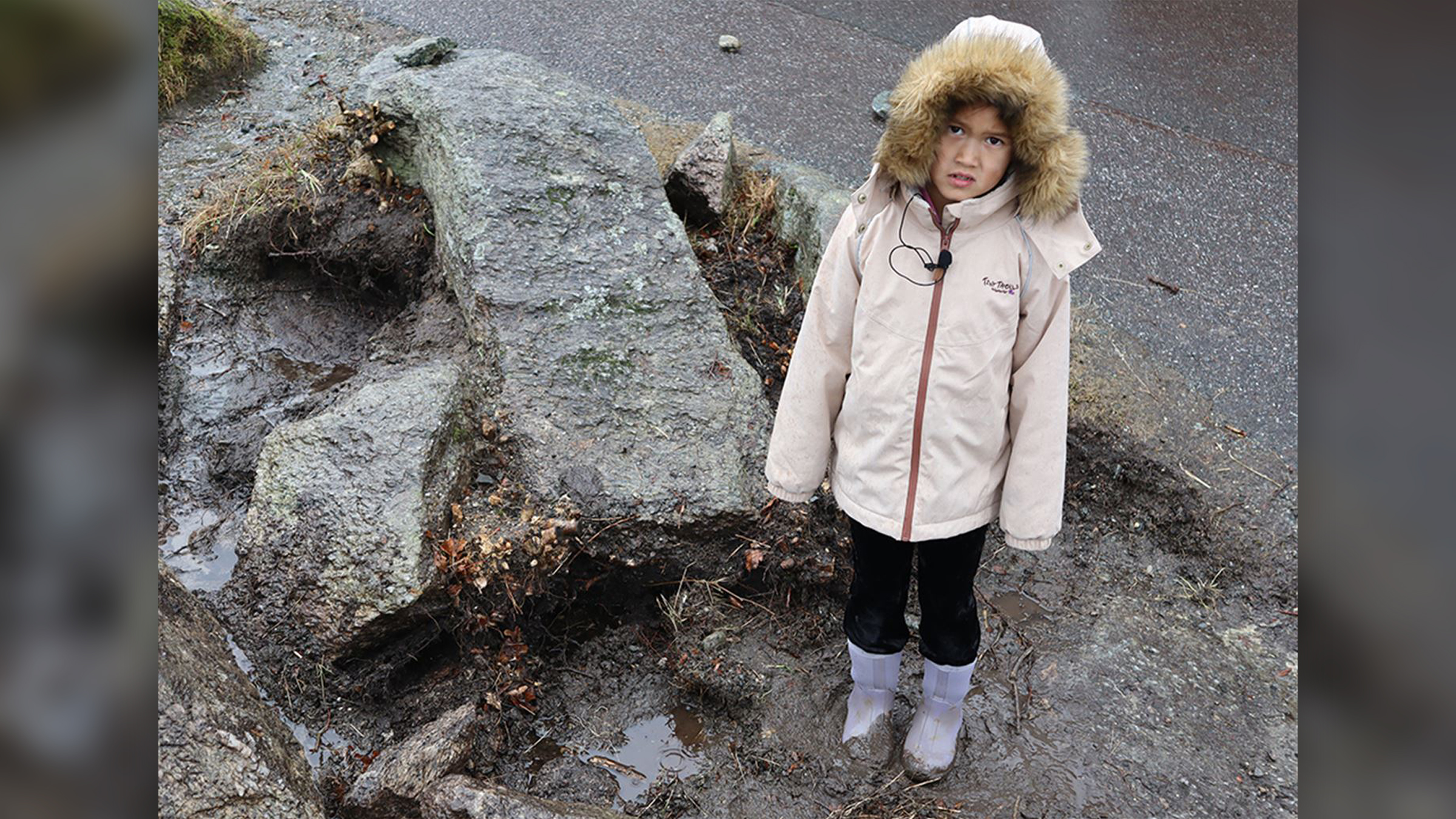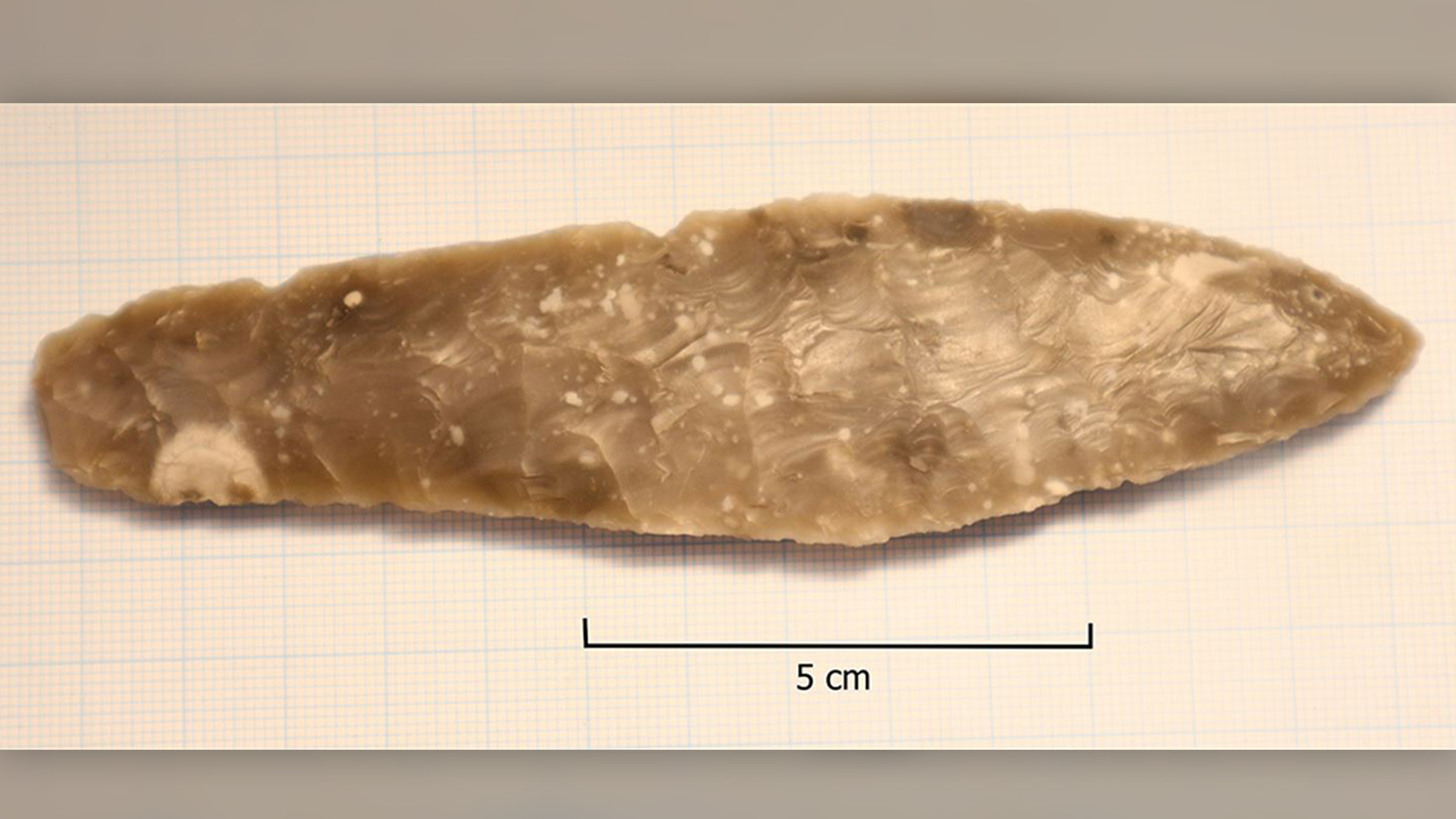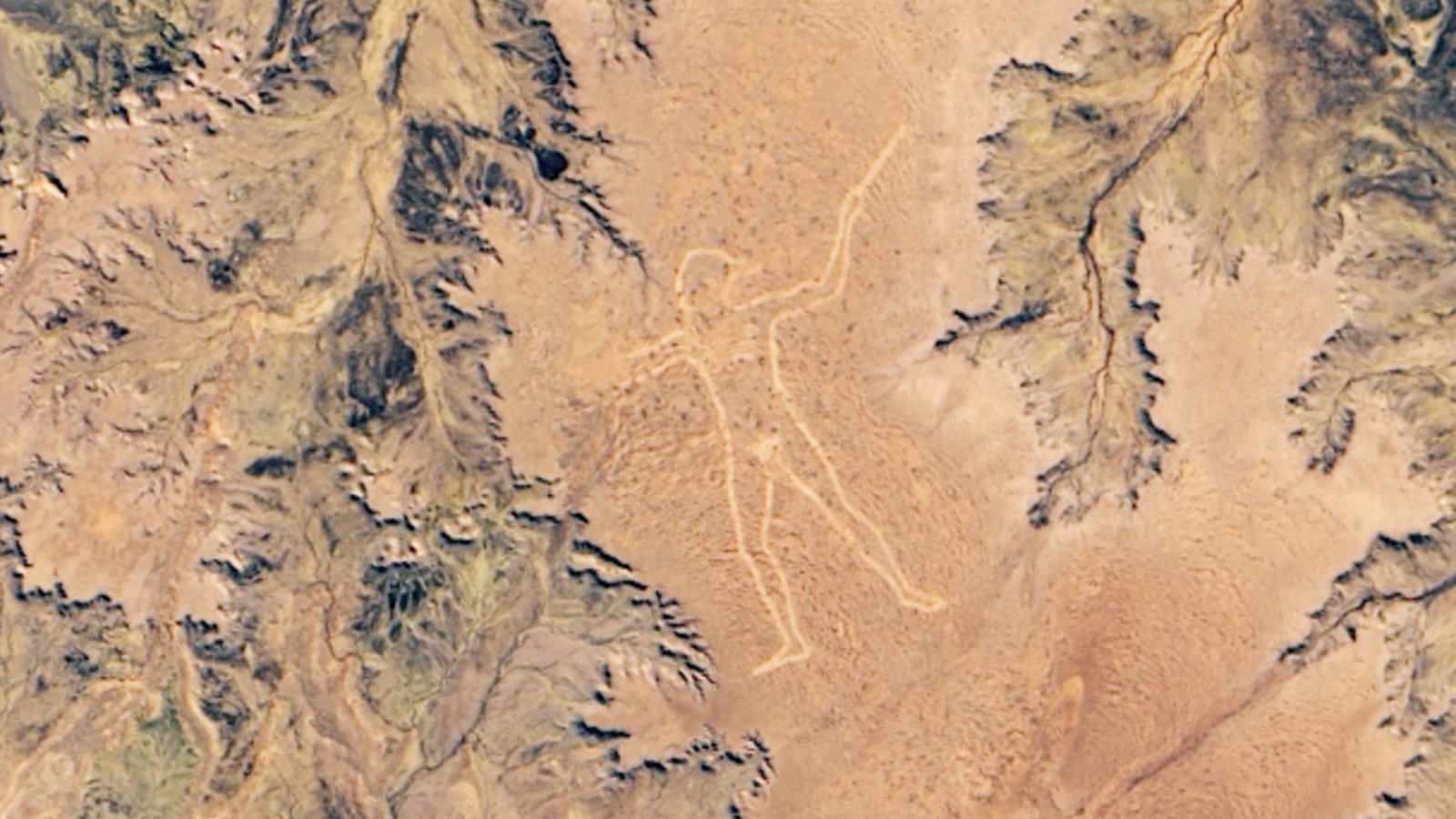8-year-old girl unearths Stone Age dagger by her school in Norway
An 8-year-old girl discovered a Stone Age dagger when she was playing outside her school in Norway.

While playing outside her school in Norway, an 8-year-old girl found an unexpected treasure — not a lost ball or a discarded jump rope, but a flint dagger crafted by Stone Age people 3,700 years ago.
The student, identified only as Elise in a statement translated from Norwegian, discovered the gray-brown dagger when she was playing in a rocky area by her school in Vestland County. "I was going to pick up a piece of glass, and then the stone was there," she said in the statement.
Elise showed the stone to her teacher, Karen Drange, who saw that the stone looked ancient. Drange contacted Vestland county council, and archaeologists from the county examined the artifact.
The nearly 5-inch-long (12 centimeters) tool is a rare find, Louise Bjerre Petersen, an archaeologist with Vestland county municipality, said in the translated statement. Flint, a hard sedimentary rock, does not naturally occur in Norway, so the dagger may have come from across the North Sea in Denmark, according to the statement.
Related: King Tut's 'dagger from outer space' may have been a gift from abroad
This type of dagger is often found with sacrificial finds, the archaeologists added. To further investigate the area, the Vestland County Council and Vestland County's University Museum in Bergen, Norway's second-largest city, teamed up to explore the school's grounds. But they didn't find any other evidence dating back to the Stone Age, they said in the statement.
Based on its style, the dagger likely dates to the New Stone Age, or the Neolithic, a time when prehistoric humans shaped stone tools and began to rely on domesticated plants and animals, build permanent villages and develop crafts, such as pottery. In Norway, the Stone Age, which includes the Paleolithic, Mesolithic and Neolithic, lasted from 10000 B.C. to 1800 B.C., with a number of hunter-gatherers permanently settling down to farm around 2400 B.C., according to Talk Norway, an educational website on Norway's history and cultural heritage.
Get the world’s most fascinating discoveries delivered straight to your inbox.
The dagger will be cataloged and used in research at the University Museum. The artifact isn't the only Stone Age discovery to recently get attention in Norway. This past winter, the full-body reconstruction of a Stone Age teenager who lived 8,300 years ago went on display at the Hå Gamle Prestegard museum in southern Norway. The teen boy was likely part of a Mesolithic hunter-gatherer group, but the details surrounding his death are a mystery; it appears he died alone leaning against a cave wall, as his remains had no indications of a burial.

Laura is the archaeology and Life's Little Mysteries editor at Live Science. She also reports on general science, including paleontology. Her work has appeared in The New York Times, Scholastic, Popular Science and Spectrum, a site on autism research. She has won multiple awards from the Society of Professional Journalists and the Washington Newspaper Publishers Association for her reporting at a weekly newspaper near Seattle. Laura holds a bachelor's degree in English literature and psychology from Washington University in St. Louis and a master's degree in science writing from NYU.

